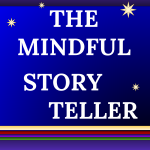
“It isn’t necessary to continually blurt out everything that is on your mind. You can say what you have to say, gently, and then you can stop. You can let someone else talk, or you can appreciate the silence.” – Chogyam Trungpa, Shambhala: The Sacred Path of the Warrior, p. 122..
∞∞∞∞∞∞∞∞
Storytelling without Story Listening is meaningless. Athletes and artists hone their talents through steadfast action, the application of new techniques, repeated exercise, etc. This is also the work of scientists, math students, novelists, and computer programmers: discipline, diligence, stick-to-it-iveness – oftentimes spiced with creative flashes, resulting in growth, learning, and ascending to higher levels of competency.
Here, we must defy convention and see the art of listening as a learned competency, as a skill that can be improved, polished, matured. If you are listening the same way you listened ten or twenty years ago, it may be time for growth – but how do we apply discipline, diligence, and perseverance to the art of listening?
We must train ourselves to listen mindfully. We can develop awareness of when, as listeners, our minds “float away” and how we can use those “float aways” as triggers to invite ourselves to re-focus as listeners. Just as a mindfulness practitioner might enter into training in mindful breathing, learning how to follow the in-breath and the out-breath, the in-breath and the out-breath, so we can enter into mindfulness training for Right Listening. We can begin to gently test ourselves: Can I listen steadily for two minutes? For three minutes? Can I offer focused, present listening for five minutes? How about sixteen or seventeen minutes?
We can begin to ask ourselves: When another person is sharing their stories, “what kind of listening” am I providing? When the other person speaks and shares their stories or their perspectives, do you truly listen or do you begin to formulate your responses to them even as they continue to speak? Do I feign listening as I begin to compose my responses?
One Tibetan teacher says, “It isn’t necessary to continually blurt out everything that is on your mind. You can say what you have to say, gently, and then you can stop. You can let someone else talk, or you can appreciate the silence.” Part of mindful listening is allowing for silence after people share their stories. We may or may not choose to respond with some thoughts or a story of our own, but allowing our words to slow down and learning to regain comfort with silence is the mindful work of enhancing the storytelling space.
∞∞∞∞∞∞∞∞
We are built to be storytellers. We are also innately wired to be story listeners. Just as we can improve our storytelling skills, we can heighten our presence and awareness as story listeners. It is a choice. This work requires an effort; it requires mindfulness. Begin to pay attention to your listening. If you keep a journal, at the end of the day, you may want give written feedback to yourself – just a sentence or two – on your listening for the day: Where was my listening really focused? When, today, was I at my best as a story listener? When was I an especially scattered and unfocused listener? When did I fail to listen? If you do this daily or even once every few days, you will begin to see where and when you are strongly present as a listener, as well as learn when your story listening is not at its best. Through mindfulness, you will slowly begin to become a better, more attentive, more mindful listener. What an incredible gift to give to your co-workers, neighbors, and, most especially, to those you love: an amazing gift – the gift of your true listening, the gift of your genuine presence.
(Music: Courtesy of Adrian Von Ziegler, “Sacred Earth.” )